A Tripuri woman weaving on a ri thanti (backstrap loom)
| Photo Credit: Courtesy B.K. Deb Barma
For a land that celebrates the unstitched cloth, it is surprising that the Indian subcontinent has produced scant work of any length on anything besides the sari. In a welcome first step, a small but significant course correction has occurred by the publication of the latest Marg issue focusing on The Risha, History in a Narrow Weave. The fact that a narrow length of woven breast cloth shoulders this task is to the credit of the issue’s guest editors, Aratrik Dev Varman, founder of Ahmedabad-based design studio Tilla, and designer Jisha Unnikrishnan.
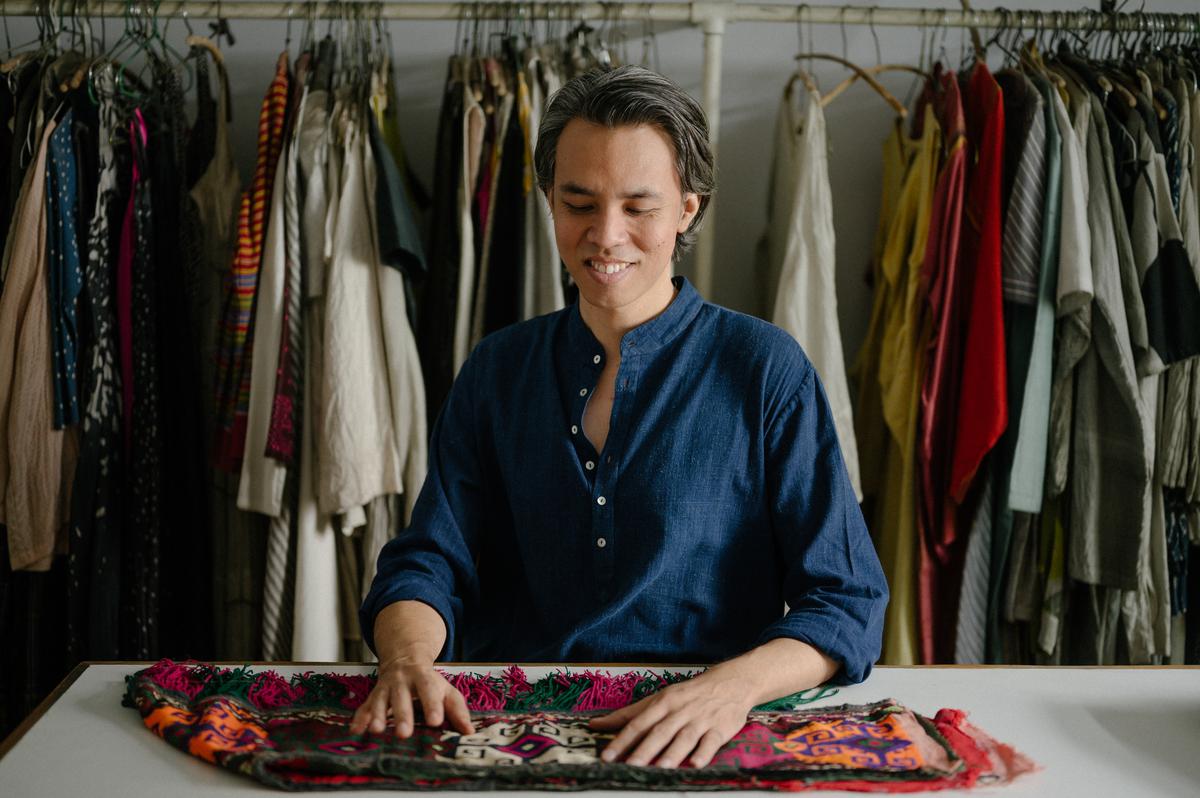
Aratrik Dev Varman
| Photo Credit:
Rohan Doshi
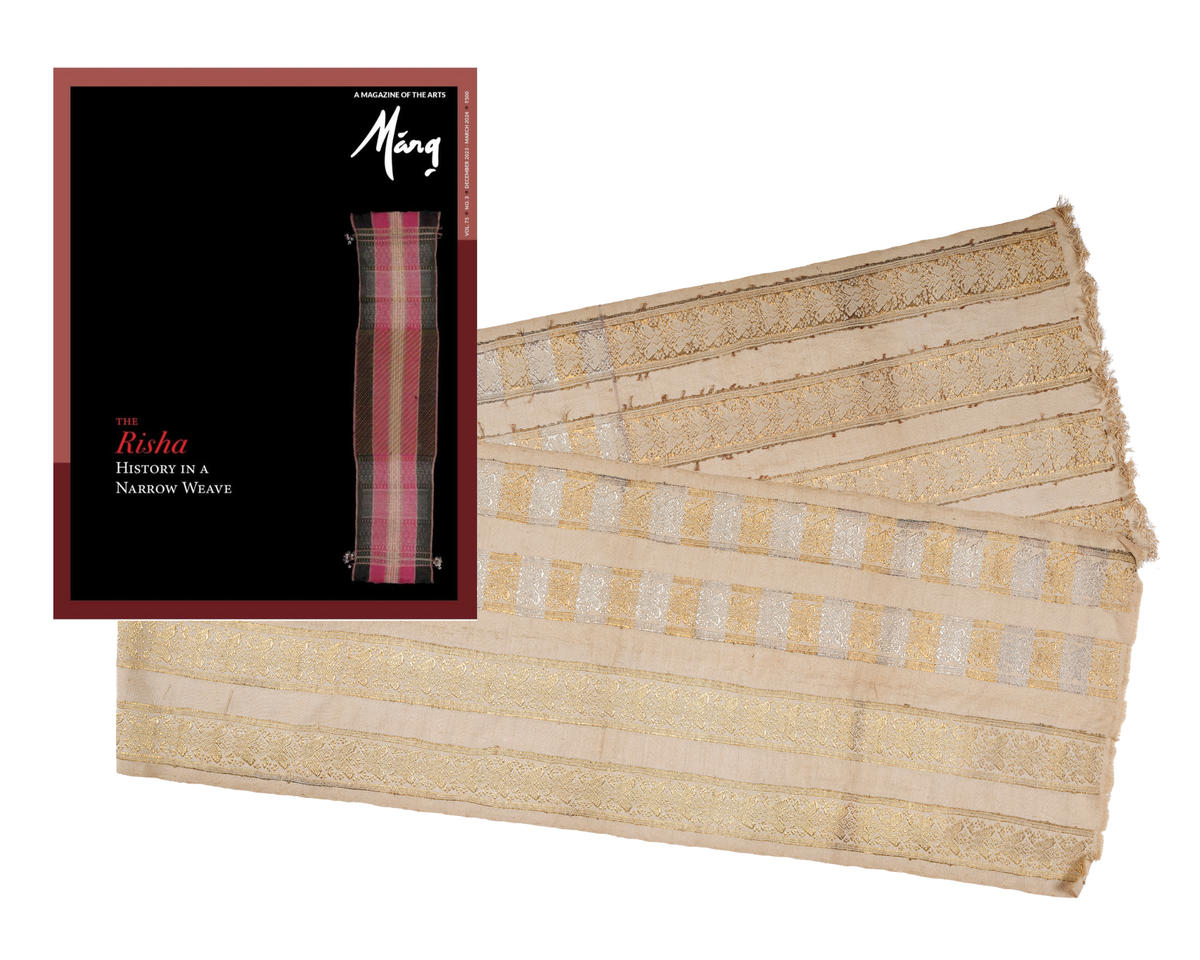
The risha from Tripura in northeastern India is a salient example of the use of unstitched cloth off the loom and ready to wear. The woven textile joins the illustrious list of other ubiquitous unstitched garments that most Indians are familiar with: the sari, turban length, shoulder cloth, dhoti, etc. What this book succinctly brings to light is the centrality of cloth in the cultural life of a people. From the colonial horror of the exposed native’s body, to the politics of who can and is allowed to wear what.
Stratification also gets inherently built into cloth — cotton for ordinary folk and silk for the palace born. Today, within urbanised environments and amidst political strife, communities have lost many a meaning of motif and pattern and are now left with just a ritual understanding of cloth, while distinct identities by way of traditional textiles have given way to homogenized apparel. Textiles as our Independence movement has taught us is as much about cloth as it is about freedom.
From the womb loom
The back strap loom seen across most cultures worldwide is amongst the oldest and simplest forms for weaving cloth. The tightly woven nature of the resultant fabric is a by-product of the loom being held together by the weaver’s lower back and hence by body tension. This act has been imaginatively called the womb loom, since the cloth produced emerges from the weaver’s torso mimicking the time-honoured action of birthing a child. The loom’s flexible structure also impacts the size of the textile produced.
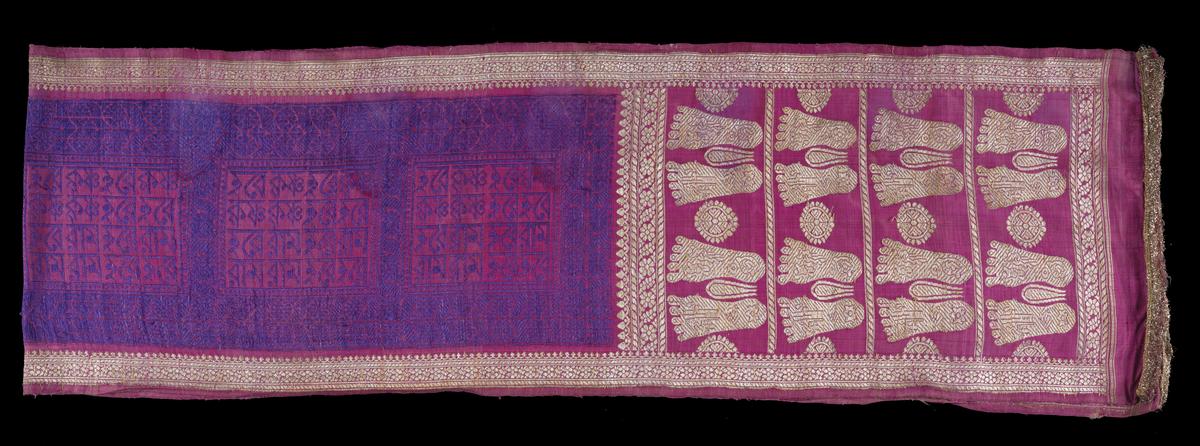
A mulberry spun silk and zari risha from the Tripuri royal family
| Photo Credit:
Courtesy Marg
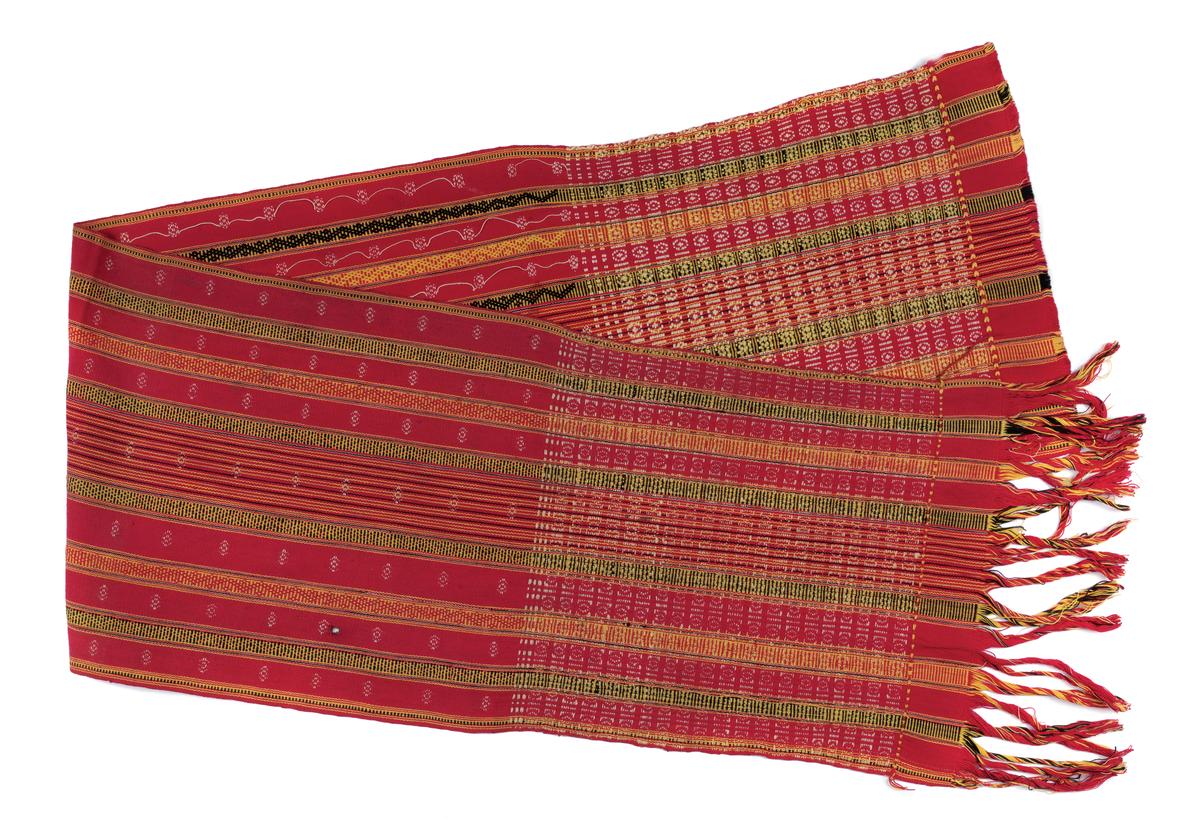
A cotton risha from the Koloi community in Tripura. It has mutaiwa sirikh (carved bamboo used during Goriya Puja) as the motif on the warp, and thampuimakrang (wings of a fly) at the ends of the panel.
| Photo Credit:
Courtesy Marg
The risha is seldom wider than 10 to 28 cm and goes up to lengths between 140 and 160 cm — principally five times its width. Its woven structure is of a warp faced fabric (warp yarns covering the weft) with patterns created using supplementary weft insertions. Regional and tribal variations contribute in large measure to a wide array of designs and patterns that are culturally identifiable by local communities.
The contents of this book frame the discourse of textiles between its use in the village and at court. These remain vestiges of a colonial gaze that we still struggle with. A subsequent deep dive by way of material and structures is much more useful, and the book admirably looks at various structural permutations and combinations allowing for a more in-depth view of the wide variety of risha produced. Rich visuals allow us to see a panoply of patterns, including impressively detailed butterflies and paisleys besides peacocks and elephants in a face-off, a delightful reminder of shared lexicons with other parts of the country.
For me, the imaginative construct of a ‘seed within a flower’ of abstracted floral patterns, and objects from everyday life — bent iron, wings of a fly — are what truly reveal the liminal quality of artistic expression and sophistication that we seldom associate with weavers from tribal cultures. These designs, interestingly, were woven for personal consumption, for the risha was seldom for commerce. Even royalty wove their own, albeit in silk.
Many styles recorded
The emergence of photography in India in the 19th century has allowed for a rare level of documentation of sartorial styles across the country’s topography. This is particularly useful when popular media plays up just one visual narrative. The works of Maharaja Bir Chandra Manikya (r.1862-96) of Tripura, an early photographer, allows us a rare glimpse of ladies at court wearing different kinds of clothing that also chronicle an evolution of risha wearing styles. Amidst a beautiful group of portraits are tantalising glimpses of the risha in plain sight and sometimes behind diaphanous gauze-like aanchals.
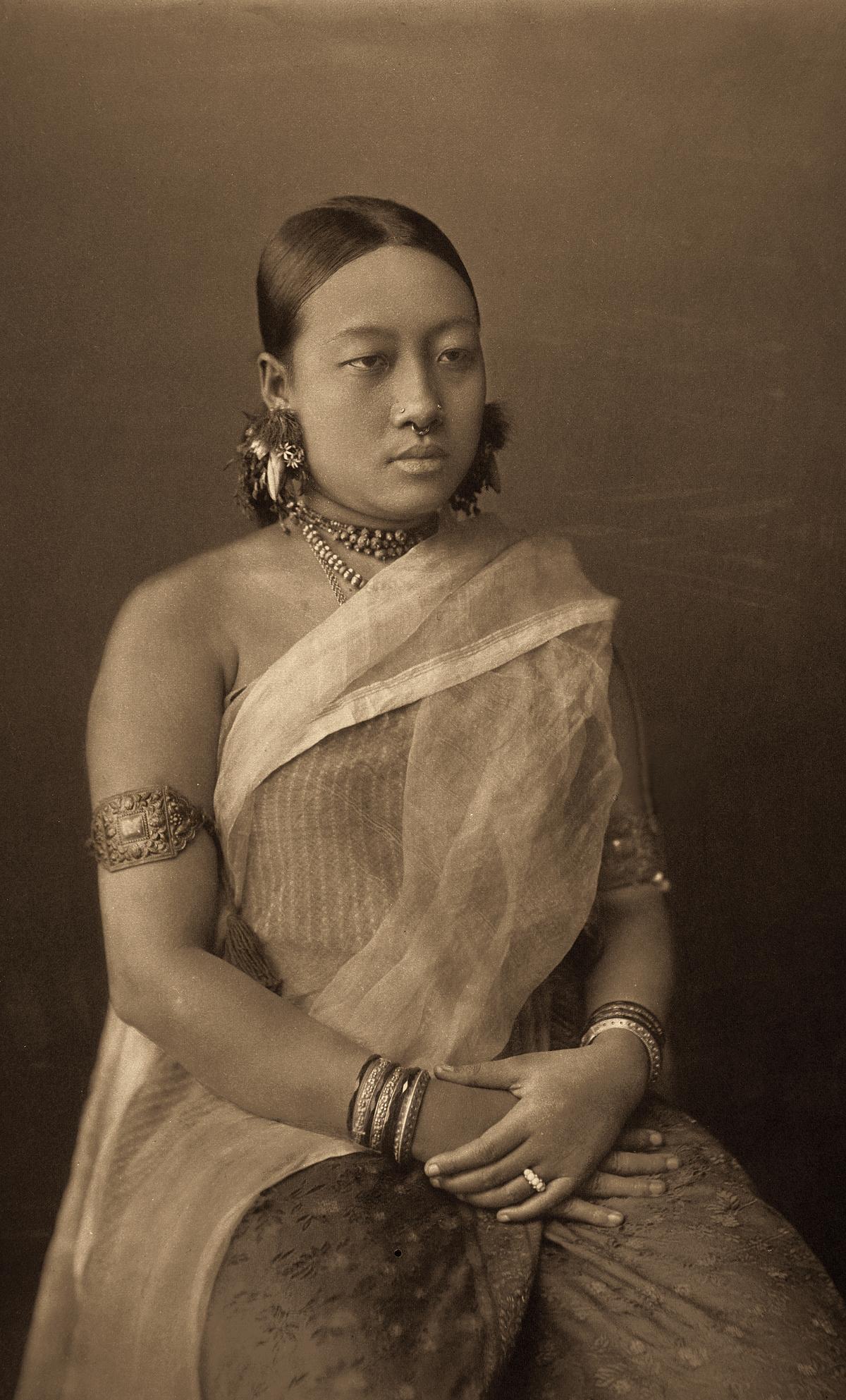
Monmohini Devi, Bir Chandra’s third queen, in a silk striped risha, covered with a plain, gauze-like aanchal (c. 1890, platinum palladium print).
| Photo Credit:
Courtesy Jishnu Dev Varma
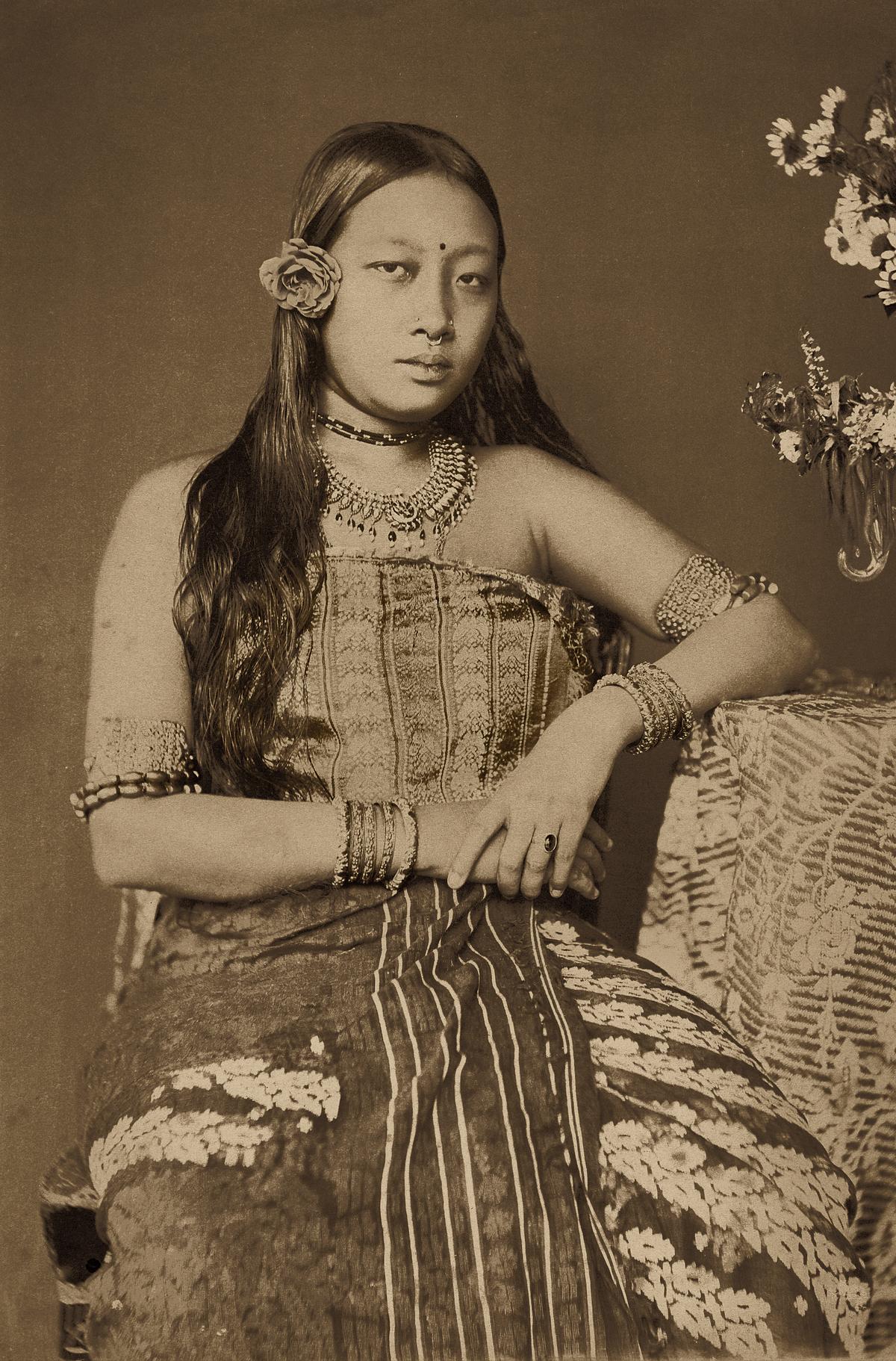
The young queen wears an elaborate silk risha teamed with a fabric patterned with inlaid floral butas, draped as a skirt.
| Photo Credit:
Courtesy Jishnu Dev Varma
The effective and abundant use of sketches, drawings and photographs brings alive the complexity of the risha and is a delight to behold. The very useful glossary of motifs and terms, besides a table of primary colours, is indicative of the great care and thought that went into putting this volume together. A conversation between two weavers from different generations tells us of the contemporary position of the risha and its status in Tripura today — where a steady income is not assured because “one never knows when the next order will come”.
In the end, the value of this book fundamentally lies in its ability to use a narrow strip of cloth to explain a far wider context of culture and people woven into the kaleidoscopic landscape of India. Tripura is but one cog in the mosaic that makes up this country. One hopes that this is the first of many more publications on the nuance and narrative yet to be explored within Indian textile traditions.
The writer is the co-founder of Eka Archiving Services, India’s first museum and cultural advisory firm.